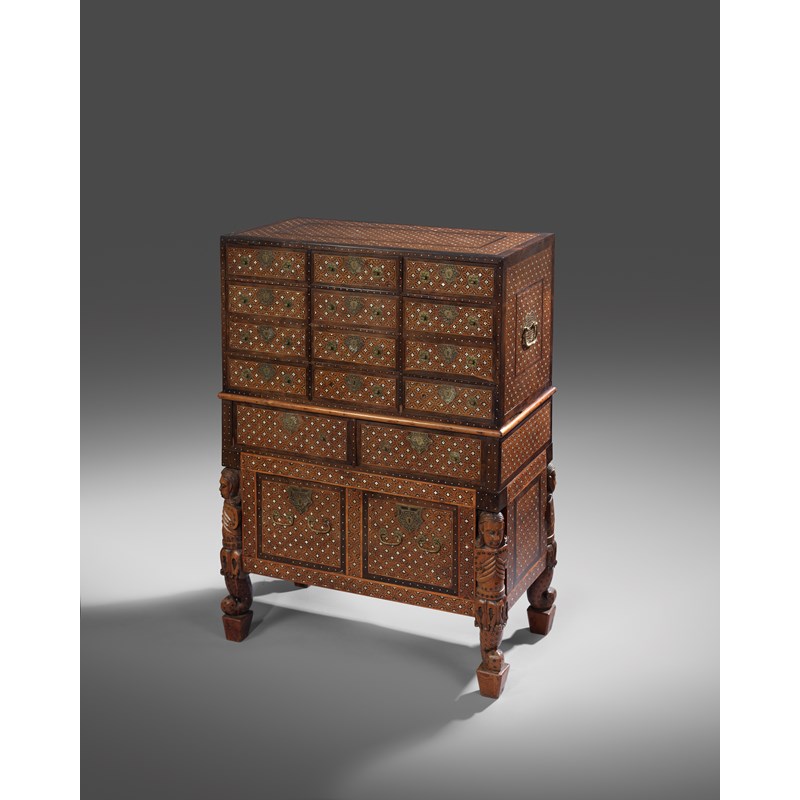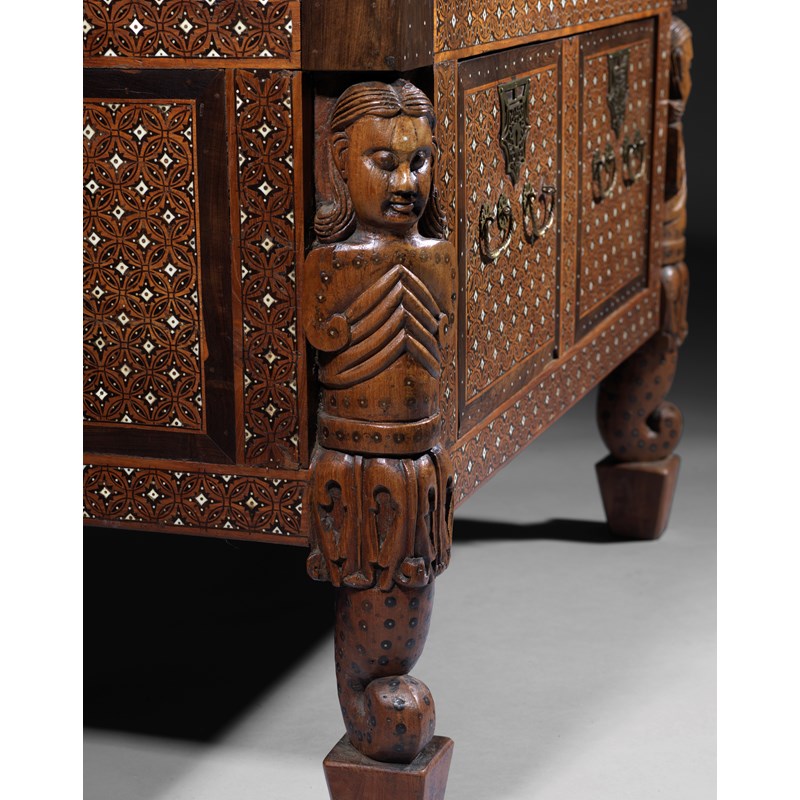Furniture, Works of Art & Clocks - 21 Oct 2020
λ AN INDO-PORTUGUESE IVORY INLAID CHEST ON CHEST CONTADOR GOA
λ AN INDO-PORTUGUESE IVORY INLAID CHEST ON CHEST CONTADOR
GOA, LATE 17TH / EARLY 18TH CENTURY
of teak and ebony, all over inlaid with panels of interlaced stars and circle motifs, the top section with eight shallow drawers and two deep drawers, the base with a pair of frieze drawers above a deep drawer, on four carved naga figure supports inlaid with ebony and ivory dots, with brass side carrying handles
121.4cm high, 88.3cm wide, 49cm deep
Catalogue Note
This contador blends the traditional form of Western cabinets on stands with the influence of the exotic east with the Mughal inspired abstract scrolling inlay and the distinctive carved supporting figures. Scholars have identified these caryatid supports with nagas and nagins which are Hindu snake divinities considered auspicious and are believed to provide protection, especially from snake bites. These exotic cabinets were produced for Portuguese merchants and traders at Indian and Goanese ports in the 17th century. Goa, the Indian state, was part of the Portuguese overseas empire from the 16th century until 1961. The attribution to Goa is based on closely related church furniture which exists in the sacristy of the Basilica of Bom Jesus in Old Goa.
There are similar examples in museum collections in Portugal and the United Kingdom in the Palacio Nacional de Sintra, the Museu Nacional de Arte Antiga, Lisbon and the Victoria & Albert Museum, London museum no. 777-1865. For related examples sold at auction, see Sotheby's, Arts of the Islamic World, 6th April 2011, lot 364 which sold for £58,850 (including fees), also Sotheby's, Fine English Furniture, Ceramics and Carpets, 22nd October 2010, lot 154 which sold for
53,125 (including fees).





 Live online bidding is available via our own
Live online bidding is available via our own